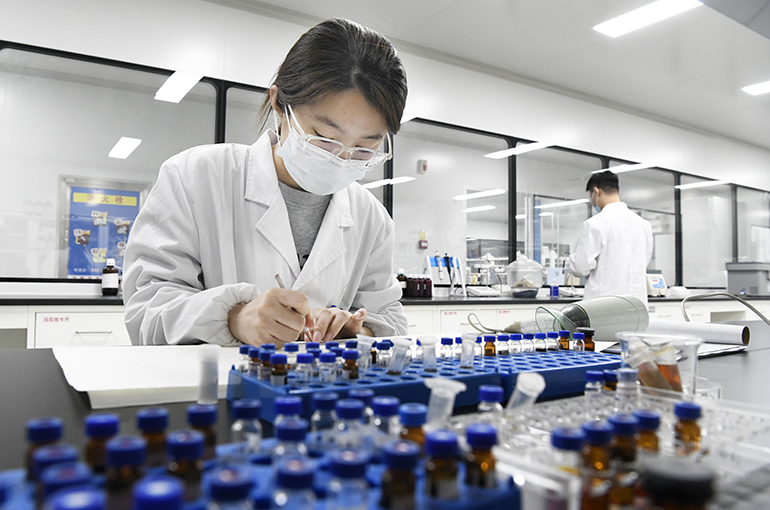 China to Reshape Global Innovative Drug Landscape Over Next Decade, Investor Says
China to Reshape Global Innovative Drug Landscape Over Next Decade, Investor Says(Yicai) July 11 -- China is poised to reshape the global pharmaceutical innovation landscape over the next 10 years, thanks to more in-house breakthroughs and deepened international cooperation, according to an industry investor.
The ‘DeepSeek Era’ of the Chinese innovative drug market has arrived, with more and more China-made innovations expected to benefit humanity, Yuan Quanhong, founder and chief executive officer of Hankang Capital, a Chinese healthcare industry-centered venture capital firm, said at an event of the Lujiazui Finance Salon.
Nearly 22 percent of the global innovative drug patent applications are from China, with about 30 percent being candidates in the clinical trial stage, according to Yuan. Last year, 31 percent of innovative drugs introduced by multinational companies came from China.
“Over the next five to 10 years, as patents for many blockbuster drugs of multinational pharmaceutical companies expire, China will become a core hub for global innovation collaboration,” Yuan noted.
China’s innovative drugs will likely be able to meet domestic health needs while securing a main spot in global markets in the future, seizing about 45 percent of the US market and 20 percent of the European one, Yuan pointed out.
In the meanwhile, capital should play a role beyond financial investment, identify breakthrough technologies at an early stage, connect global resources, and help enterprises cross the ‘valley of death,’ he added.
Nine of the world’s top 25 pharmaceutical companies by pipeline are from Asia, said Yang Ying, head of strategy and business development at Sanofi China.
Over 90 percent of the products in the pipeline at Hengrui Pharmaceuticals and 80 percent of those at China National Biotec Group and CSPC Pharmaceutical Group are self-developed and self-produced, indicating that Asian countries, and China in particular, have cultivated robust, innovative capabilities, Yang noted.
Multinational pharmaceutical giants should focus their efforts not only on enhancing the research and development of their own pipelines but also on actively seeking external cooperation opportunities, Yang suggested. Meanwhile, Chinese drugmakers can still improve their global clinical trial layouts, which creates opportunities for collaboration with multinationals.
Over the past decade, China has made rapid progress in basic research, said Ma Dawei, academician at the Chinese Academy of Sciences. This, combined with the translational capabilities of venture capital firm-backed companies, allows the Chinese biomedicine industry to seize opportunities in both follow-on and original innovation over the next decade.
Editor: Futura Costaglione